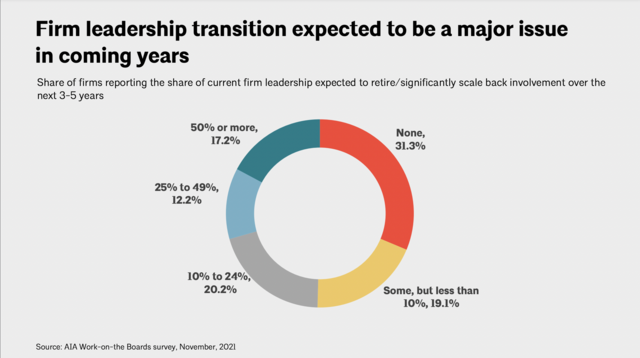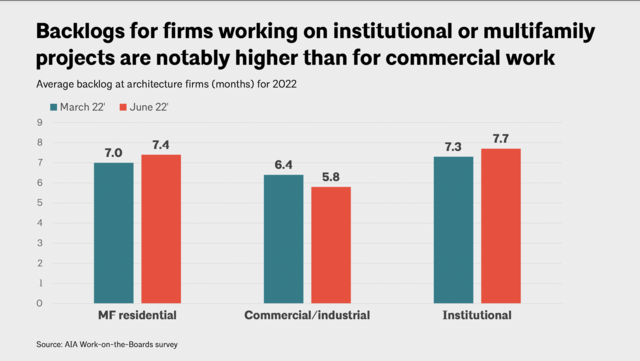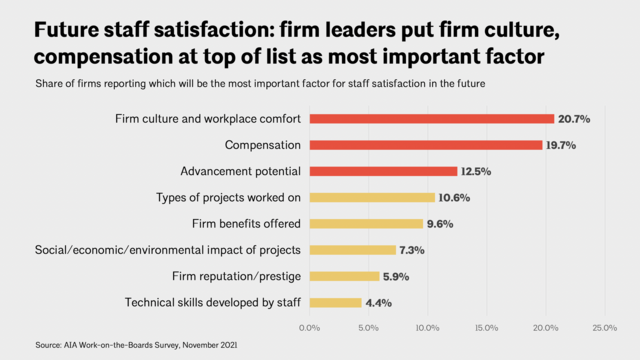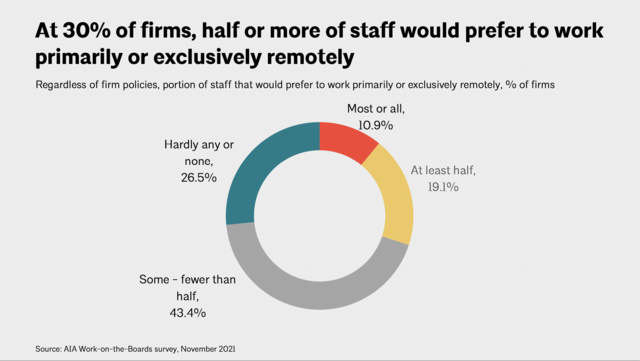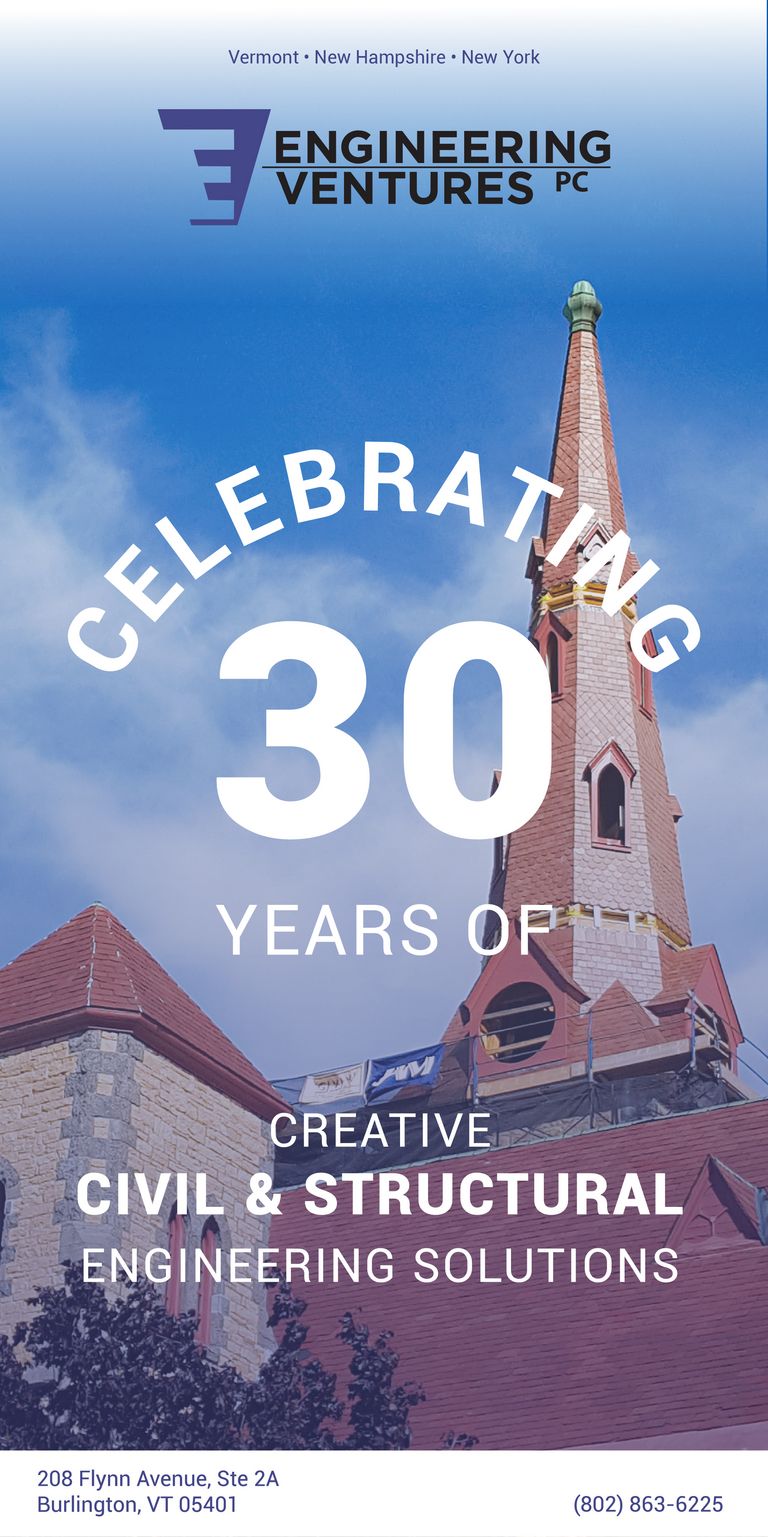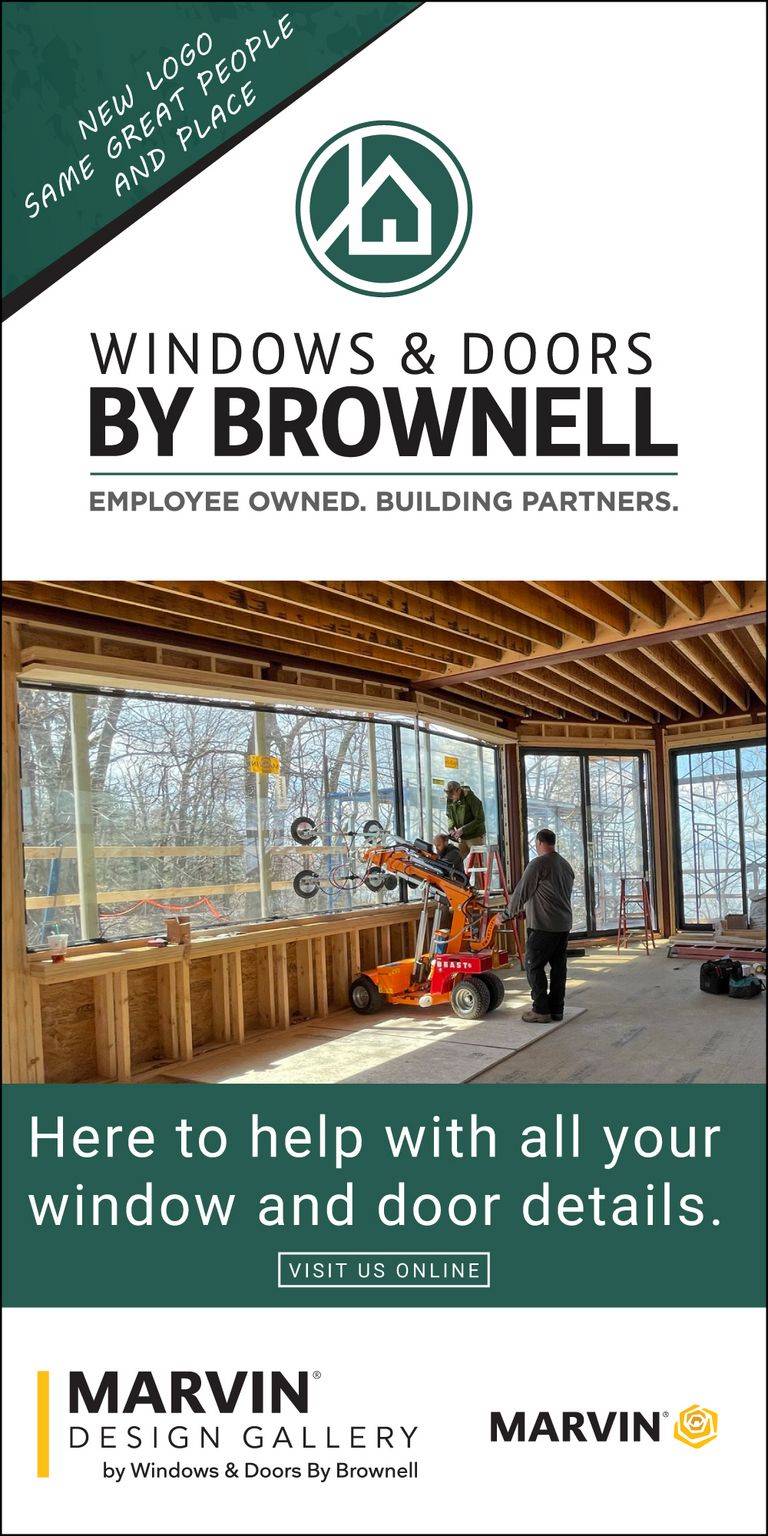Competing for Talent in the VT Employment Market
By Sarah O Donnell, AIAVT Executive Director
With new terminology growing out of the fast paced changes in the job market as a result of COVID-19, (the great resignation, quiet quitting, and the great reshuffle) Vermont has seen some of these national trends play out in our own little state, and firms have felt the increased challenges associated with finding new employees. It’s likely considered old news at this point that the unemployment statistics both nationally and in Vermont have gone back to pre-pandemic lows, with Vermont’s unemployment rate at 2.1% as of August of 2022.
Anecdotally, architects and design firms continue to share with me that they’ve never been busier, with the uptick in building construction that came about as a result of COVID impacting the workload of just about everyone - from sole proprietors to large firms. According to AIA’s Work-on-the-Boards survey, November 2021, architectural firms’ backlogs are 7 months on average. With this increased workload, many firms have made efforts to bolster their teams, and have posted positions available on AIAVT’s jobs board, as well as in other local and national jobs listings. I’ve been curious to know how their recruitment efforts are going, so I reached out to some of the firms who recently had jobs listed to find out what the process has been like on their side.
“We posted two open positions at the beginning of the summer, which both sat vacant for months. We luckily were able to fill one of them within the last month, but are still looking for another architect. We’re super busy and may need to get creative – solutions such as partnering with other firms in the short-term to meet our commitments are currently being discussed.” -Anonymous.
Some of the obvious challenges when it comes to recruitment are beyond the control of firm leaders, with lack of available housing being a significant one. Even when firms are able to find a strong candidate, those coming from out-of-state are sometimes having to give up a prospective position with a Vermont firm because they are unable to find a place to live. One firm leader shared the following: “I met a great candidate from the Southwest US seeking to move his young family. The concern he shared is real; little water in Lake Mead/Colorado River and wildfires that intensify year after year impacting air quality for miles. In a sense, that makes him the first climate refugee I have met seeking to move to VT from elsewhere in the US. We made an offer, but he declined because the move is too hard to do with costs and limited housing in Vermont.”
If a firm can get creative, they might have an advantage in this area. Things like relocation expense reimbursements, connecting the new candidate with a current member of the team to help them in their housing search, or even going so far as to providing some sort of short-term housing option (do you have an empty in-law suite over your garage?) where a candidate can stay while they search for a longer term residence are all ways that can make a significant difference to bringing the right person from out of state.
While the pool of candidates may be smaller than during times of higher unemployment, there are some things that firms can do to help themselves stand out in a competitive job market.
During my recent attendance of the AIA CACE conference, Michele A. Russo, the Managing Director of Research & Practice at AIA national gave a presentation on economic outlook for the industry, and noted that according to a recent survey by AIA, for the first time ever, respondents indicated that firm culture and workplace comfort is more important than compensation. We already know that people are attracted to Vermont for the quality of life and lifestyle it offers. Adding to that things like a flexible work schedule, the option to work remotely, or even a four day work week might catch the eye of a strong prospective candidate, and give a firm some competitive edge in their recruitment efforts.
Another consideration when it comes to recruitment is how your firm is appealing to younger professionals. To help recognize some of the efforts that firms in our region make, the New England Chapters of AIA started the Emerging Professional (EP) Friendly Firm Awards program back in 2018. The Awards are given based on firms’ responses to an annual survey, which asks a series of questions to determine firm initiatives that promote the advancement of Emerging Professionals through professional development and personal growth opportunities. An Emerging Professional (EP) is defined by the AIA as a professional who has completed their academic studies up to the point of licensure or up to 10 years after completion of their academic studies.
This year, Vermont firms TruexCullins and E4H Environments for Health Architecture were both awarded the EP Friendly Firm recognition. While the survey has closed for the year, it’s worth keeping an eye out for it annually (it typically opens in late summer- this year the survey was announced Aug 15th and closed Sept. 16).
The Friendly Firm survey questions themselves can actually be a great resource to help come up with ideas for new initiatives to try. Ideas like establishing an ARE Mentor for those who are taking licensing exams, keeping an in house library of exam study guides, flashcards, (or directing an EP to take advantage of AIAVT’s lending library!) or providing a subscription to online prep programs, compensating Emerging Professional staff a paid day to sit for each of the ARE exams, covering the cost of all passed ARE exams and more can all be listed in a job advertisement to help garner interest. Other questions include:
- Does the firm provide support for Emerging Professional staff to attend conventions, conferences or other continuing education events?
- Does the firm encourage and support Emerging Professional staff to be involved in a committee, professional affiliation, community group and/or design organization within or outside of the firm?
- Does the firm provide reimbursement for Emerging Professional staff to attend full-day or half-day educational or social events provided by the AIA or other allied professions?
- Does the firm introduce Emerging Professional staff to the business of architecture by including them in business planning, strategic planning, business operations, contracts, and/or project cost conversations?
- Does the firm cover the cost of the AIA membership for all of the Emerging Professional staff (including Associate AIA and AIA)?
- Does the firm compensate Emerging Professional staff with a bonus or an increase in salary upon recognizing an individual’s completion of the ARE Exams and licensure process?
- Does the firm have a written maternity and/or paternity leave policy?
Another key question is, how do we attract more applicants? Posting an open position on AIAVT’s jobs board is always a great place to start. Where the position is advertised can influence who applies. Firms who are interested in diversifying their team should consider posting to the jobs board on National Organization of Minority Architects (NOMA).
Looking to attract out of state talent? Try the AIA national jobs board. Interested in stealing talent from surrounding states? Try AIANH, AIA New York State, or Boston Society of Architects
While architecture focused job listings might be the obvious route, getting creative here can also go a long way. I was recently told that an engineering firm in Burke, VT has had no trouble staying fully staffed since they hit on the idea of advertising their open positions in a mountain bike magazine. Maybe your perfect future employee enjoys skiing at Stowe or sailing on Lake Champlain, and it’s just a matter of getting in front of them in new ways!

